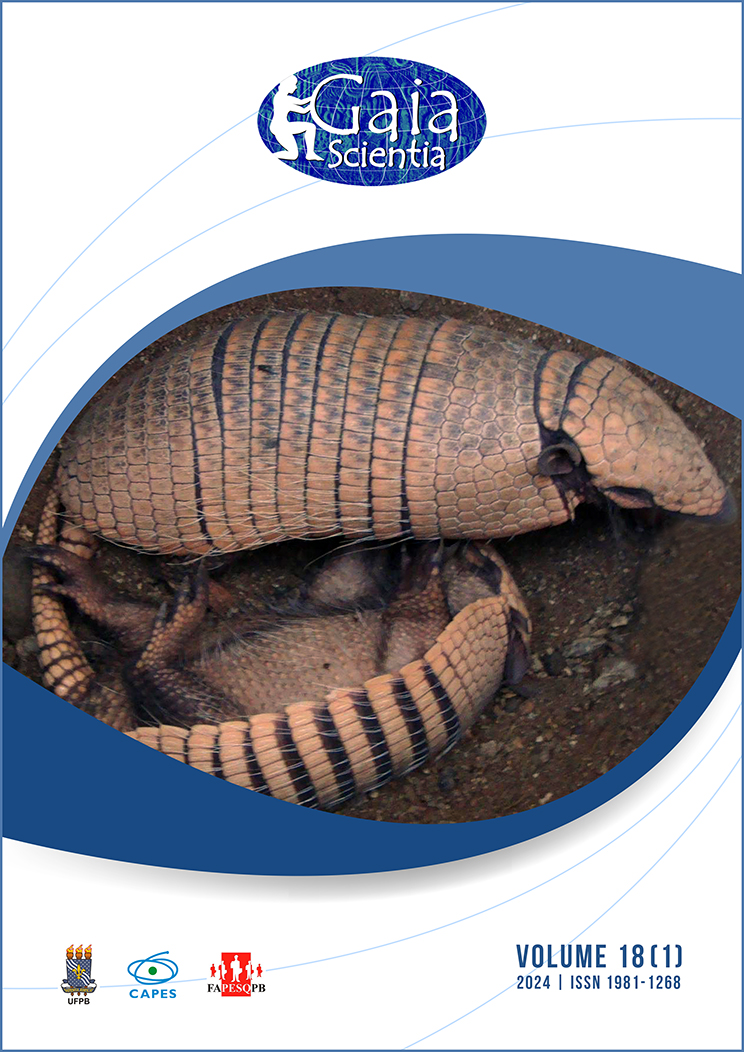Relationship between age and biological correlations with hunting in the Caatinga of Paraíba
Abstract
Hunting is extensively studied in Africa, but it remains under-researched in Brazil, especially in the Caatinga. Here, we present a study conducted in the municipality of Lagoa (Northeast Brazil), where we interviewed 34 hunters. We identified the locally preferred species and observed an average hunting frequency of 5.7 ± 3.8 days/month, with a strong correlation to the hunter's age (p < 0.001). Of the 70 species mentioned for consumption, 47 are birds, 20 are mammals, and 3 are reptiles. Mammals were the most prominent group, followed by birds and reptiles. Among mammal families, Dasypodidae, Myrmecophagidae, and Mephitidae were notable. For birds, Tinamidae, Columbidae, and Anatidae were highlighted. The most important mammals were Dasypus novemcinctus, Tamandua tetradactyla, and Euphractus sexsinctus; the most significant birds were Leptotila verreauxi, Crypturellus tataupa, and Crypturellus parvirostris; and the reptile of note was Salvator merianae. We identified that the VU (Vulnerable) status is correlated with species' body weight (p < 0.001). The frequency of hunting was higher than in other studies, possibly due to hunters living near more preserved areas with greater availability and abundance of species. Our results highlight the importance of hunting in the local diet and the influence of socioecological and cultural factors on species selection.










